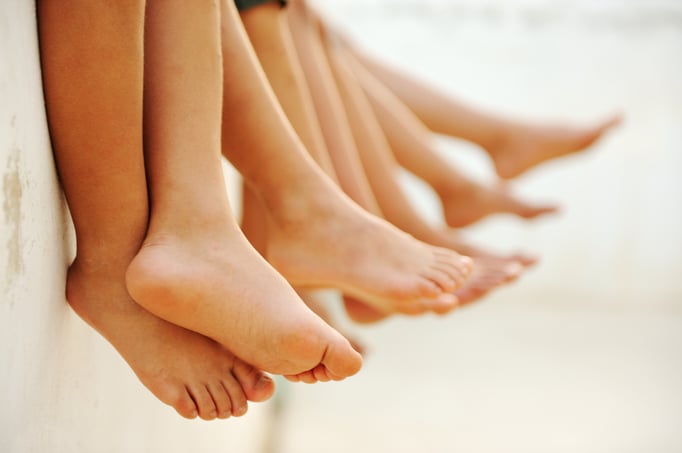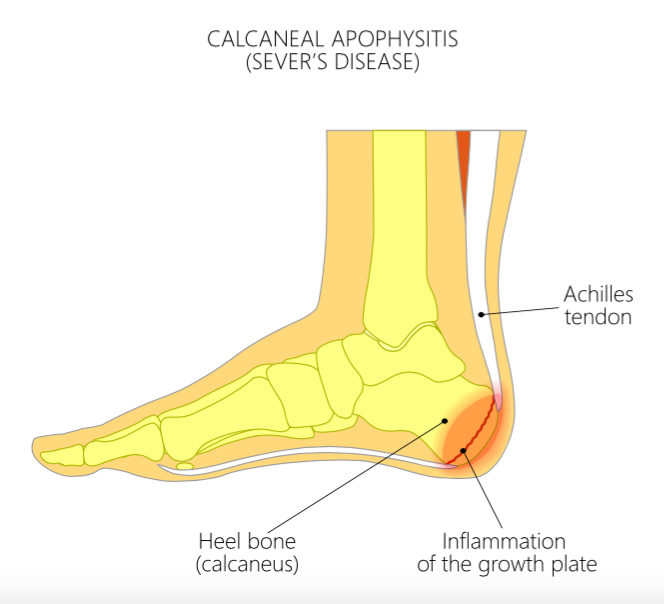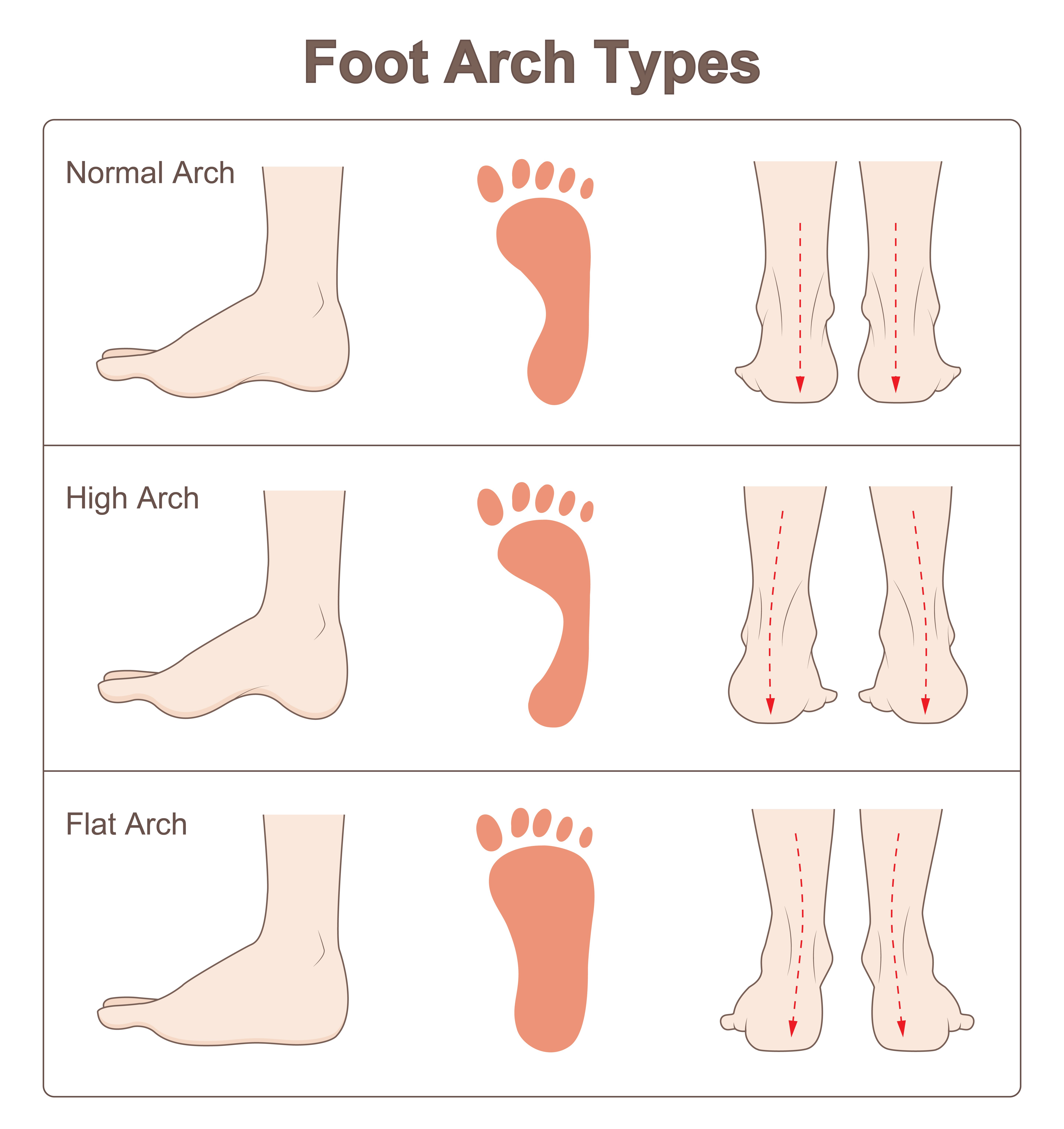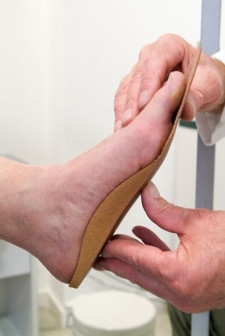A Q&A with Texas Foot Surgeons about Pediatric Heel Pain.

"Mom, my heel hurts!"
What is the condition that causes our kids heel discomfort and how can we address it?
We have asked the experts at Texas Foot Surgeons for their advice on how to get ahead of pediatric heel pain so your athlete can get back to the sport they love.
In today’s culture, most kids participate in some type of highly competitive activity that requires hours spent training. While practice does make perfect, these long hours do sometimes come at a price. A painful heel condition usually begins to plague kids between ages 8 to 14 who are involved in competitive sports. The pain can start suddenly and can seemingly be unrelenting.
Q: What is Sever’s disease?

A: It’s a very common condition for younger children, involving the open growth plates in their heels.
While Sever’s disease is temporary, kids can have it for several years until their growth plates close.
It usually develops between the ages of 8 and 14, but the timing can vary, depending on the child and how he or she grows.
Q: Are some sports more likely to cause it than others?
A: Any physical activity can irritate the growth plate in a growing child’s heel. Soccer and basketball are notorious for causing Sever’s disease, but football, cheer, and track are common causes, too. Any sport that uses cleats can lead to this issue.
Athletics or play that involve a lot of jumping or running can trigger Sever’s disease, depending on how much kids practice or play sports.
Playing sports year-round can often set it off since young bones do not have time to fully recover between sports seasons.
Q: What are the symptoms of Sever’s disease?
A: The foot or heel pain is different for each child. Some kids find it hard to walk, while others may just feel a slight ache in the heel. The pain usually gets worse with the activity.
Some kids will have a limp, while others will have significant difficulty walking at all.
Q: Are some kids at greater risk than others?
A: Yes. The kids who get Sever’s disease tend to have a high, rigid, or stiff arch and often tight Achilles tendons. The problem can be structural and biomechanical.
Kids who have a flatter foot usually don’t get Sever’s disease as often. Their loose feet seem better able to absorb the shock of jumping.

Q: What is the treatment for Sever’s disease?
A: Kids typically feel better with reduced activity. We give them anti-inflammatory medication like ibuprofen (acetaminophen doesn’t work as well for this). That usually reduces symptoms.
We also have them apply ice over their sock and wear a heel cup if they’re still sore. This cushions the heel and provides added shock absorption. Sometimes we recommend a full-length orthotic placed in the child’s shoes. These would be used both during everyday walking and during their activity.
We will start the child on physical therapy exercises designed to stretch the Achilles tendon. These can usually be done at home with mom or dad.
If these measures don’t work, kids often have to use a walking boot to really reduce their activity. Sometimes the boot is worn throughout the day and can be removed for the sport only.
We also sometimes will reduce the competitive sport activity in half. For instance, only practice 1-2 days a week instead of 3-4 days.
In dramatic cases, kids have to stop playing sports and wear a fiberglass walking cast for two to four weeks. That usually takes care of it.
Full-Length Orthotic
Q: Does heel pain ever return after treatment?
A: It can, but once you know how to manage the symptoms, including well-cushioned shoes, heel cups, orthotics, stretching, ice, and anti-inflammatories combined with rest, you can usually manage the pain when it flares up.
The good news is that this condition goes away when the heel growth plate matures and fuses, and there is no long-term damage.
Sever’s disease does cause a lot of pain and can be very debilitating for a sports season or two. Often this comes with frustration from both the child and parent.
Q: Anything else parents should know?
A: Any recurrent pain during sports is not normal and should not be ignored. Though Sever’s disease is the most common cause of heel pain in children, there are some other issues that can cause pain as well such as stress fracture of the heel bone. An evaluation by a foot and ankle specialist is important to ensure you have the right diagnosis.
If your child notices foot pain or heel pain during or after exercising, have the doctor look at it. They will take an x-ray, do a biomechanical exam, history, and physical. A comprehensive treatment plan will then be developed that will work for your family. This does not always involve stopping the activity completely but making adjustments so that your athlete can perform at their very best.



